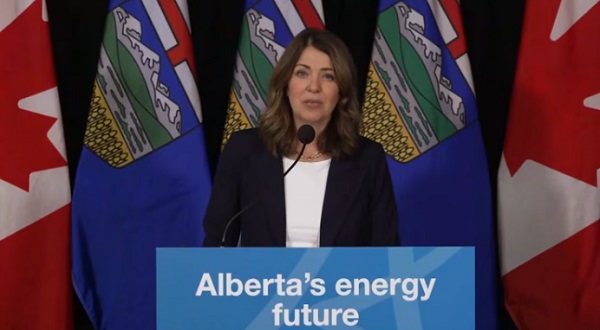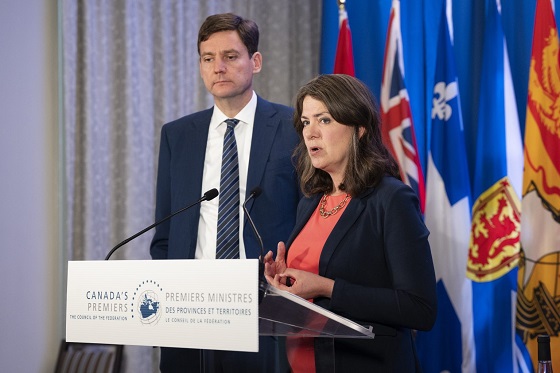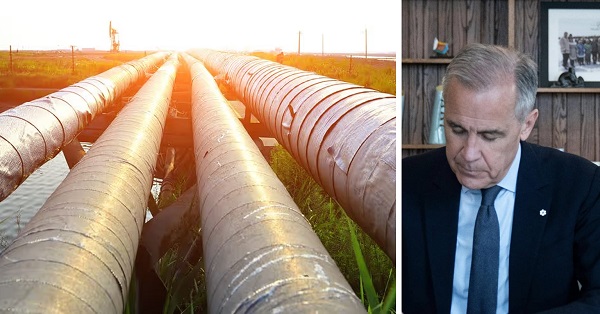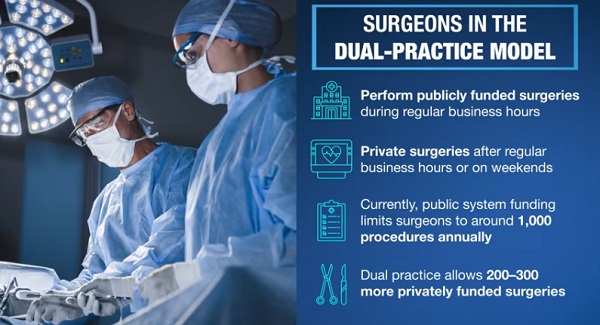Alberta
Wait times down. Better EMS response times. Province releases results of 90 day Health Care Action Plan
90-day HCAP update: Health care wait times dropping
Albertans are spending less time waiting for the medical care they need since the Health Care Action Plan (HCAP) was launched.
Alberta has the best front-line health care workers in the world, and Alberta’s government will work to have the right supports in place to ensure Albertans get the care they need when and where they need it. When Alberta’s HCAP was launched on Nov. 17, Alberta’s government identified four different areas on which it would work with Alberta Health Services to improve. After 90 days, Albertans are seeing improvements in all four areas.
“We are delivering on our promise to reduce wait times, add more front-line staff and keep Albertans updated on the progress we’re making. There is no one silver bullet to fixing our health care system, and change will take time. But positive change is happening, and Albertans are receiving better access to the level of care they need when and where they need it. We appointed Dr. John Cowell as official administrator to speed up improvements and make sure Albertans are getting high quality of care sooner and we are seeing some good, early results.”
Improving EMS response time
In an emergency, every minute counts and over the past three months, ambulances have been responding faster to emergency calls. Improved ambulance times means that Albertans are receiving the urgent care they need from highly skilled paramedics more quickly.
From November to the end of January, EMS response times for most urgent calls improved across the province in metro, urban, rural and remote areas. The decrease in EMS wait times across the province can be broken down to:
- 17 minutes in metro and urban areas, down from 21.8 minutes
- 19.2 minutes in communities with more than 3,000 residents, down from 21.5 minutes
- 34.9 minutes in rural communities with fewer than 3,000 residents, down from 36 minutes
- 57.5 minutes in remote communities, down from 63.9 minutes
In addition to improved EMS wait times, more ambulances have been available, meaning that red alerts, which indicate a lack of ambulance availability at a point in time, were substantially reduced in Edmonton and Calgary:
- Edmonton has seen a 92 per cent reduction in the number of alerts issued in January 2023 compared with January 2022.
- Calgary has seen a 60 per cent reduction over the same period.
The initiative to triage 911 calls to the most appropriate level of care has also played a role in ensuring paramedics are able to answer the most urgent calls. Since the program was launched in January, 1,600 callers with non-urgent conditions were transferred from 911 to Health Link registered nurses. Alberta’s government is pleased to see progress on its aim to reduce EMS wait times and will continue working to further decrease the amount of time an Albertan waits for an ambulance to arrive.
“The good news is wait times are trending in the right direction and Albertans are getting the care they need more quickly. More doctors, nurses and paramedics are available to help Albertans, and more help is on the way as Alberta continues to add front-line workers for ambulances, ERs and across the system.”
Reducing surgery wait times
Alberta’s government continues its work to reduce surgical wait times for Albertans. Part of a strong health care system is ensuring that Alberta patients are receiving their surgeries within clinically recommended times. Since November 2022, the number of patients waiting longer than the clinically recommended time has decreased by 9.4 per cent.
Alberta’s chartered surgical facilities are helping to reduce wait times and ensure Albertans are receiving the surgeries they need to improve their health and their quality of life. Nearly 7,000 more publicly funded surgeries were completed at chartered surgical facilities in January compared with November, a number that includes orthopedic and eye surgeries. As this work continues, AHS is focused on ensuring that those patients who have waited the longest for surgery are prioritized.
“I would like to thank our incredible front-line workers as well as our AHS leaders, who have worked extremely hard to identify and implement improvements to our health care system, with focus on our priority areas. We have emerged from an extremely challenging time, and I am optimistic that we will continue to see improvements that will benefit all Albertans whenever they need our care and support.”
Decreasing emergency room wait times and improving access to care
Alberta’s government is also encouraged to see that in January, more Albertans received care sooner when they visited emergency departments. Progress in lowering emergency department wait times has been seen in the two measures:
- Wait time to see a doctor in an emergency department decreased by almost 10 per cent provincially since November.
- Time spent in an emergency department for admitted patients has been reduced by about five per cent.
There is still work to be done to ensure Albertans have lower wait times in emergency rooms across the province, and Alberta’s government will continue to make policy and funding decisions to see those improvements. In January, the number of assessed patients waiting in the province’s top 14 hospitals for a continuing care space was 179, lower than the 218 patients in the 2018-2019 fiscal year, and also lower than the 253 patients waiting in November 2022. A number of changes have helped to spur progress on emergency department wait times from November to the end of January:
- AHS opened 255 new acute care beds (non-intensive care unit) across the province.
- More beds in continuing care facilities have been opened – freeing more hospital beds for urgent care: 55 new long-term care beds, 292 new designated supportive living beds and 38 new community addiction and mental health beds.
- Additionally, 36 new transition beds for people discharged from ERs in Edmonton who are experiencing homelessness will be opened this year.
Empowering health care workers to deliver health care
Alberta continues to hire more health care workers to support key areas. AHS is adding 420 more positions in emergency rooms, acute care, EMS and community care, on top of the nearly 400 front-line and support staff hired since November. If passed, Budget 2023 would provide $158 million for a new Health Workforce Strategy to make sure the province has the medical professionals needed and to improve the work environment.
Alberta is making good progress on increasing the number of highly skilled doctors, nurses, paramedics, nurse practitioners and other health allied professionals in the province:
- AHS added 800 registered nurses, licensed practical nurses and health care aides in 2022.
- Since 2019, AHS has added 5,800 front-line staff, including 1,800 registered nurses and 300 paramedics.
- AHS recruited 28 physicians to rural Alberta and added 278 more registered nurses, licensed practical nurses and health care aides since November.
- EMS added 39 front-line staff, including paramedics and emergency communications officers, over the last three months.
- 80 additional full-time paramedic positions are being recruited, and AHS is transitioning 70 current temporary full-time EMS positions to regular full-time.
- AHS is currently hiring 114 full-time nursing staff for emergency department teams to speed up EMS transfers and free up paramedics to respond to more calls.
Alberta
Alberta can’t fix its deficits with oil money: Lennie Kaplan

This article supplied by Troy Media.
Alberta is banking on oil to erase rising deficits, but the province’s budget can’t hold without major fiscal changes
Alberta is heading for a fiscal cliff, and no amount of oil revenue will save it this time.
The province is facing ballooning deficits, rising debt and an addiction to resource revenues that rise and fall with global markets. As Budget 2026 consultations begin, the government is gambling on oil prices to balance the books again. That gamble is failing. Alberta is already staring down multibillion-dollar shortfalls.
I estimate the province will run deficits of $7.7 billion in 2025-26, $8.8 billion in 2026-27 and $7.5 billion in 2027-28. If nothing changes, debt will climb from $85.2 billion to $112.3 billion in just three years. That is an increase of more than $27 billion, and it is entirely avoidable.
These numbers come from my latest fiscal analysis, completed at the end of October. I used conservative assumptions: oil prices at US$62 to US$67 per barrel over the next three years. Expenses are expected to keep growing faster than inflation and population. I also requested Alberta’s five-year internal fiscal projections through access to information but Treasury Board and Finance refused to release them. Those forecasts exist, but Albertans have not been allowed to see them.
Alberta has been running structural deficits for years, even during boom times. That is because it spends more than it brings in, counting on oil royalties to fill the gap. No other province leans this hard on non-renewable resource revenue. It is volatile. It is risky. And it is getting worse.
That is what makes Premier Danielle Smith’s recent Financial Post column so striking. She effectively admitted that any path to a balanced budget depends on doubling Alberta’s oil production by 2035. That is not a plan. It is a fantasy. It relies on global markets, pipeline expansions and long-term forecasts that rarely hold. It puts taxpayers on the hook for a commodity cycle the province does not control.
I have long supported Alberta’s oil and gas industry. But I will call out any government that leans on inflated projections to justify bad fiscal choices.
Just three years ago, Alberta needed oil at US$70 to balance the budget. Now it needs US$74 in 2025-26, US$76.35 in 2026-27 and US$77.50 in 2027-28. That bar keeps rising. A single US$1 drop in the oil price will soon cost Alberta $750 million a year. By the end of the decade, that figure could reach $1 billion. That is not a cushion. It is a cliff edge.
Even if the government had pulled in $13 billion per year in oil revenue over the last four years, it still would have run deficits. The real problem is spending. Since 2021, operating spending, excluding COVID-19 relief, has jumped by $15.5 billion, or 31 per cent. That is nearly eight per cent per year. For comparison, during the last four years under premiers Ed Stelmach and Alison Redford, spending went up 6.9 per cent annually.
This is not a revenue problem. It is a spending problem, papered over with oil booms. Pretending Alberta can keep expanding health care, education and social services on the back of unpredictable oil money is reckless. Do we really want our schools and hospitals held hostage to oil prices and OPEC?
The solution was laid out decades ago. Oil royalties should be saved off the top, not dumped into general revenue. That is what Premier Peter Lougheed understood when he created the Alberta Heritage Savings Trust Fund in 1976. It is what Premier Ralph Klein did when he cut spending and paid down debt in the 1990s. Alberta used to treat oil as a bonus. Now it treats it as a crutch.
With debt climbing and deficits baked in, Alberta is out of time. I have previously laid out detailed solutions. But here is where the government should start.
First, transparency. Albertans deserve a full three-year fiscal update by the end of November. That includes real numbers on revenue, expenses, debt and deficits. The government must also reinstate the legal requirement for a mid-year economic and fiscal report. No more hiding the ball.
Second, a real plan. Not projections based on hope, but a balanced three-year budget that can survive oil prices dropping below forecast. That plan should be part of Budget 2026 consultations.
Third, long-term discipline. Alberta needs a fiscal sustainability framework, backed by a public long-term report released before year-end.
Because if this government will not take responsibility, the next oil shock will.
Lennie Kaplan is a former senior manager in the fiscal and economic policy division of Alberta’s Ministry of Treasury Board and Finance, where, among other duties, he examined best practices in fiscal frameworks, program reviews and savings strategies for non-renewable resource revenues. In 2012, he won a Corporate Values Award in TB&F for his work on Alberta’s fiscal framework review. In 2019, Mr. Kaplan served as executive director to the MacKinnon Panel on Alberta’s finances—a government-appointed panel tasked with reviewing Alberta’s spending and recommending reforms.
Alberta
IEA peak-oil reversal gives Alberta long-term leverage

This article supplied by Troy Media.
The peak-oil narrative has collapsed, and the IEA’s U-turn marks a major strategic win for Alberta
After years of confidently predicting that global oil demand was on the verge of collapsing, the International Energy Agency (IEA) has now reversed course—a stunning retreat that shatters the peak-oil narrative and rewrites the outlook for oil-producing regions such as Alberta.
For years, analysts warned that an oil glut was coming. Suddenly, the tide has turned. The Paris-based IEA, the world’s most influential energy forecasting body, is stepping back from its long-held view that peak oil demand is just around the corner.
The IEA reversal is a strategic boost for Alberta and a political complication for Ottawa, which now has to reconcile its climate commitments with a global outlook that no longer supports a rapid decline in fossil fuel use or the doomsday narrative Ottawa has relied on to advance its climate agenda.
Alberta’s economy remains tied to long-term global demand for reliable, conventional energy. The province produces roughly 80 per cent of Canada’s oil and depends on resource revenues to fund a significant share of its provincial budget. The sector also plays a central role in the national economy, supporting hundreds of thousands of jobs and contributing close to 10 per cent of Canada’s GDP when related industries are included.
That reality stands in sharp contrast to Ottawa. Prime Minister Mark Carney has long championed net-zero timelines, ESG frameworks and tighter climate policy, and has repeatedly signalled that expanding long-term oil production is not part of his economic vision. The new IEA outlook bolsters Alberta’s position far more than it aligns with his government’s preferred direction.
Globally, the shift is even clearer. The IEA’s latest World Energy Outlook, released on Nov. 12, makes the reversal unmistakable. Under existing policies and regulations, global demand for oil and natural gas will continue to rise well past this decade and could keep climbing until 2050. Demand reaches 105 million barrels per day in 2035 and 113 million barrels per day in 2050, up from 100 million barrels per day last year, a direct contradiction of years of claims that the world was on the cusp of phasing out fossil fuels.
A key factor is the slowing pace of electric vehicle adoption, driven by weakening policy support outside China and Europe. The IEA now expects the share of electric vehicles in global car sales to plateau after 2035. In many countries, subsidies are being reduced, purchase incentives are ending and charging-infrastructure goals are slipping. Without coercive policy intervention, electric vehicle adoption will not accelerate fast enough to meaningfully cut oil demand.
The IEA’s own outlook now shows it wasn’t merely off in its forecasts; it repeatedly projected that oil demand was in rapid decline, despite evidence to the contrary. Just last year, IEA executive director Fatih Birol told the Financial Times that we were witnessing “the beginning of the end of the fossil fuel era.” The new outlook directly contradicts that claim.
The political landscape also matters. U.S. President Donald Trump’s return to the White House shifted global expectations. The United States withdrew from the Paris Agreement, reversed Biden-era climate measures and embraced an expansion of domestic oil and gas production. As the world’s largest economy and the IEA’s largest contributor, the U.S. carries significant weight, and other countries, including Canada and the United Kingdom, have taken steps to shore up energy security by keeping existing fossil-fuel capacity online while navigating their longer-term transition plans.
The IEA also warns that the world is likely to miss its goal of limiting temperature increases to 1.5 °C over pre-industrial levels. During the Biden years, the IAE maintained that reaching net-zero by mid-century required ending investment in new oil, gas and coal projects. That stance has now faded. Its updated position concedes that demand will not fall quickly enough to meet those targets.
Investment banks are also adjusting. A Bloomberg report citing Goldman Sachs analysts projects global oil demand could rise to 113 million barrels per day by 2040, compared with 103.5 million barrels per day in 2024, Irina Slav wrote for Oilprice.com. Goldman cites slow progress on net-zero policies, infrastructure challenges for wind and solar and weaker electric vehicle adoption.
“We do not assume major breakthroughs in low-carbon technology,” Sachs’ analysts wrote. “Even for peaking road oil demand, we expect a long plateau after 2030.” That implies a stable, not shrinking, market for oil.
OPEC, long insisting that peak demand is nowhere in sight, feels vindicated. “We hope … we have passed the peak in the misguided notion of ‘peak oil’,” the organization said last Wednesday after the outlook’s release.
Oil is set to remain at the centre of global energy demand for years to come, and for Alberta, Canada’s energy capital, the IEA’s course correction offers renewed certainty in a world that had been prematurely writing off its future.
Toronto-based Rashid Husain Syed is a highly regarded analyst specializing in energy and politics, particularly in the Middle East. In addition to his contributions to local and international newspapers, Rashid frequently lends his expertise as a speaker at global conferences. Organizations such as the Department of Energy in Washington and the International Energy Agency in Paris have sought his insights on global energy matters.
Troy Media empowers Canadian community news outlets by providing independent, insightful analysis and commentary. Our mission is to support local media in helping Canadians stay informed and engaged by delivering reliable content that strengthens community connections and deepens understanding across the country.
-

 Alberta23 hours ago
Alberta23 hours agoFrom Underdog to Top Broodmare
-

 Alberta2 days ago
Alberta2 days agoAlberta and Ottawa ink landmark energy agreement
-

 Carbon Tax2 days ago
Carbon Tax2 days agoCanadian energy policies undermine a century of North American integration
-

 International2 days ago
International2 days agoIdentities of wounded Guardsmen, each newly sworn in
-

 COVID-191 day ago
COVID-191 day agoCanadian government seeking to destroy Freedom Convoy leader, taking Big Red from Chris Barber
-

 Alberta2 days ago
Alberta2 days agoWest Coast Pipeline MOU: A good first step, but project dead on arrival without Eby’s assent
-

 Energy2 days ago
Energy2 days agoPoilievre says West Coast Pipeline MOU is no guarantee
-

 Energy2 days ago
Energy2 days agoWill the New West Coast Pipeline MoU Lead to Results? Almost Certainly Not According to AI






